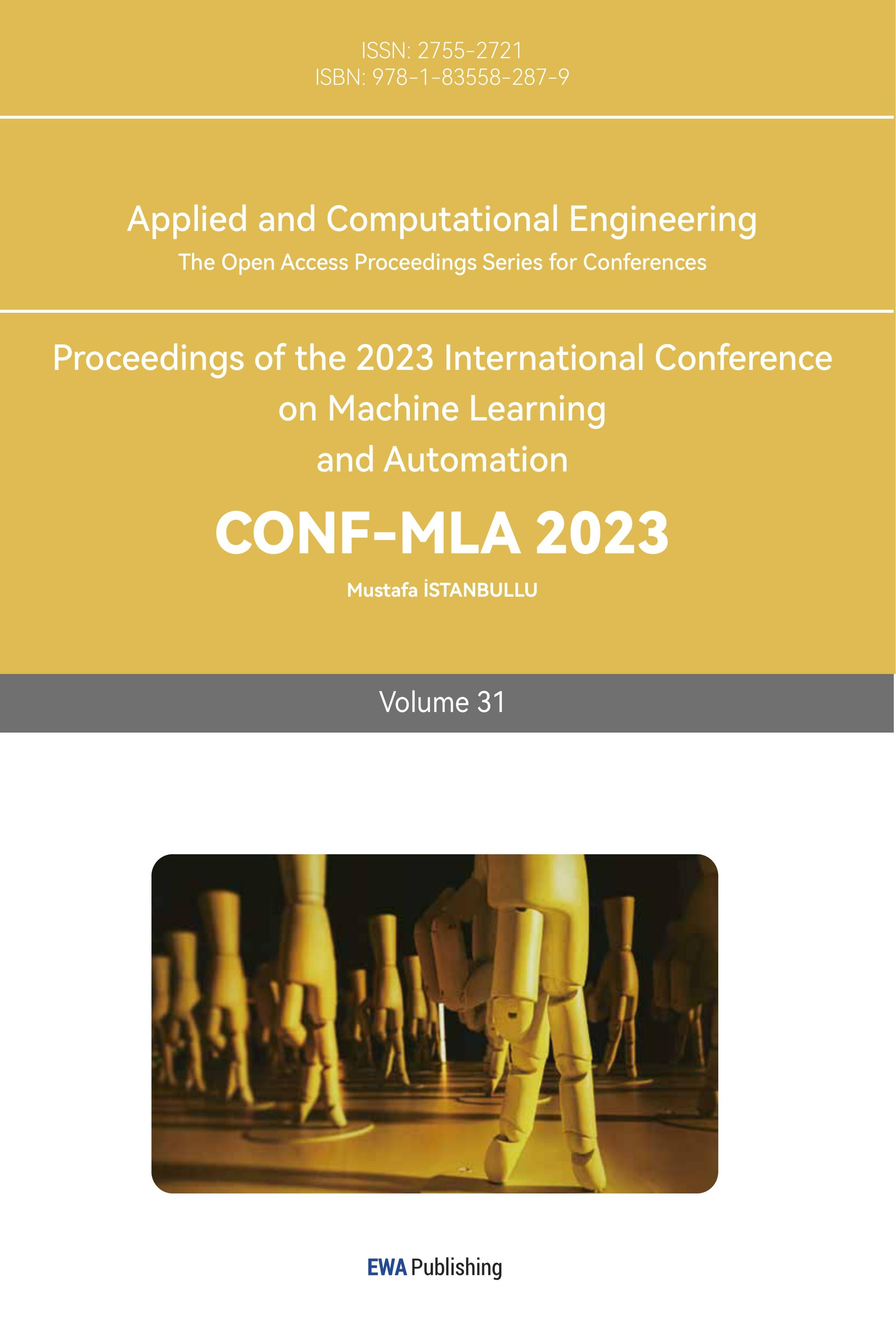References
[1]. Liu L, Lu S, Zhong R, Wu B, Yao Y, Zhang Q and Shi W 2020 IEEE Internet Things J. 8 6469–6486
[2]. Yurtsever E, Lambert J, Carballo A and Takeda K 2020 IEEE Access 8 58443–69
[3]. Irhebhude M E, Shabi M and Kolawole A 2019 IJIVP 10 2054–60
[4]. Lyu W, Zhou Z, Chen L and Zhou Y 2019 Virtual Reality & Intelligent Hardware 1 55–83
[5]. Wang Z and Yang Z 2020 Multimedia Systems 26 413–30
[6]. Abbadi N K E, Al Hassani S A and Abdulkhaleq A H 2021 J. Phys.: Conf. Ser. 1999 012115
[7]. Gao S, Yang K, Shi H, Wang K and Bai J 2022 IEEE Trans Instrum Meas 71 34
[8]. Chen L, Zou Q, Pan Z, Lai D, Zhu L, Hou Z, Wang J and Cao D 2020 IEEE Trans. Intell. Transport. Syst. 21 5110–22
[9]. Sihan L, Hongwen Q, Jixiang L and Weimeng H 2023 Digital Technology & Application. 3 180–183
[10]. Cortes-Gallardo E, Moreno-Garcia C F, Zhu A, Chipuli-Silva D, Gonzalez-Gonzalez J A, Morales-Ortiz D, Fernandez S, Urriza B, Valverde-Lopez J, Marin A, Perez H, Izquierdo-Reyes J and Bustamante-Bello R 2019 2019 International Conference on Mechatronics, Electronics and Automotive Engineering (ICMEAE) 50–55
[11]. Jingxiong Z and Yiyou Z 2021 Computer Knowledge and Technology. 27 107–108
[12]. Weidong P and Lidong P 2020 Modern Computer. 31 64–67
[13]. Wang L, Yu W and Li B 2020 2020 IEEE 4th Information Technology, Networking, Electronic and Automation Control Conference (ITNEC) 694
Cite this article
Wang,Y. (2024). Panoramic image stitching technology and its application in the field of autonomous driving. Applied and Computational Engineering,31,284-289.
Data availability
The datasets used and/or analyzed during the current study will be available from the authors upon reasonable request.
Disclaimer/Publisher's Note
The statements, opinions and data contained in all publications are solely those of the individual author(s) and contributor(s) and not of EWA Publishing and/or the editor(s). EWA Publishing and/or the editor(s) disclaim responsibility for any injury to people or property resulting from any ideas, methods, instructions or products referred to in the content.
About volume
Volume title: Proceedings of the 2023 International Conference on Machine Learning and Automation
© 2024 by the author(s). Licensee EWA Publishing, Oxford, UK. This article is an open access article distributed under the terms and
conditions of the Creative Commons Attribution (CC BY) license. Authors who
publish this series agree to the following terms:
1. Authors retain copyright and grant the series right of first publication with the work simultaneously licensed under a Creative Commons
Attribution License that allows others to share the work with an acknowledgment of the work's authorship and initial publication in this
series.
2. Authors are able to enter into separate, additional contractual arrangements for the non-exclusive distribution of the series's published
version of the work (e.g., post it to an institutional repository or publish it in a book), with an acknowledgment of its initial
publication in this series.
3. Authors are permitted and encouraged to post their work online (e.g., in institutional repositories or on their website) prior to and
during the submission process, as it can lead to productive exchanges, as well as earlier and greater citation of published work (See
Open access policy for details).
References
[1]. Liu L, Lu S, Zhong R, Wu B, Yao Y, Zhang Q and Shi W 2020 IEEE Internet Things J. 8 6469–6486
[2]. Yurtsever E, Lambert J, Carballo A and Takeda K 2020 IEEE Access 8 58443–69
[3]. Irhebhude M E, Shabi M and Kolawole A 2019 IJIVP 10 2054–60
[4]. Lyu W, Zhou Z, Chen L and Zhou Y 2019 Virtual Reality & Intelligent Hardware 1 55–83
[5]. Wang Z and Yang Z 2020 Multimedia Systems 26 413–30
[6]. Abbadi N K E, Al Hassani S A and Abdulkhaleq A H 2021 J. Phys.: Conf. Ser. 1999 012115
[7]. Gao S, Yang K, Shi H, Wang K and Bai J 2022 IEEE Trans Instrum Meas 71 34
[8]. Chen L, Zou Q, Pan Z, Lai D, Zhu L, Hou Z, Wang J and Cao D 2020 IEEE Trans. Intell. Transport. Syst. 21 5110–22
[9]. Sihan L, Hongwen Q, Jixiang L and Weimeng H 2023 Digital Technology & Application. 3 180–183
[10]. Cortes-Gallardo E, Moreno-Garcia C F, Zhu A, Chipuli-Silva D, Gonzalez-Gonzalez J A, Morales-Ortiz D, Fernandez S, Urriza B, Valverde-Lopez J, Marin A, Perez H, Izquierdo-Reyes J and Bustamante-Bello R 2019 2019 International Conference on Mechatronics, Electronics and Automotive Engineering (ICMEAE) 50–55
[11]. Jingxiong Z and Yiyou Z 2021 Computer Knowledge and Technology. 27 107–108
[12]. Weidong P and Lidong P 2020 Modern Computer. 31 64–67
[13]. Wang L, Yu W and Li B 2020 2020 IEEE 4th Information Technology, Networking, Electronic and Automation Control Conference (ITNEC) 694









